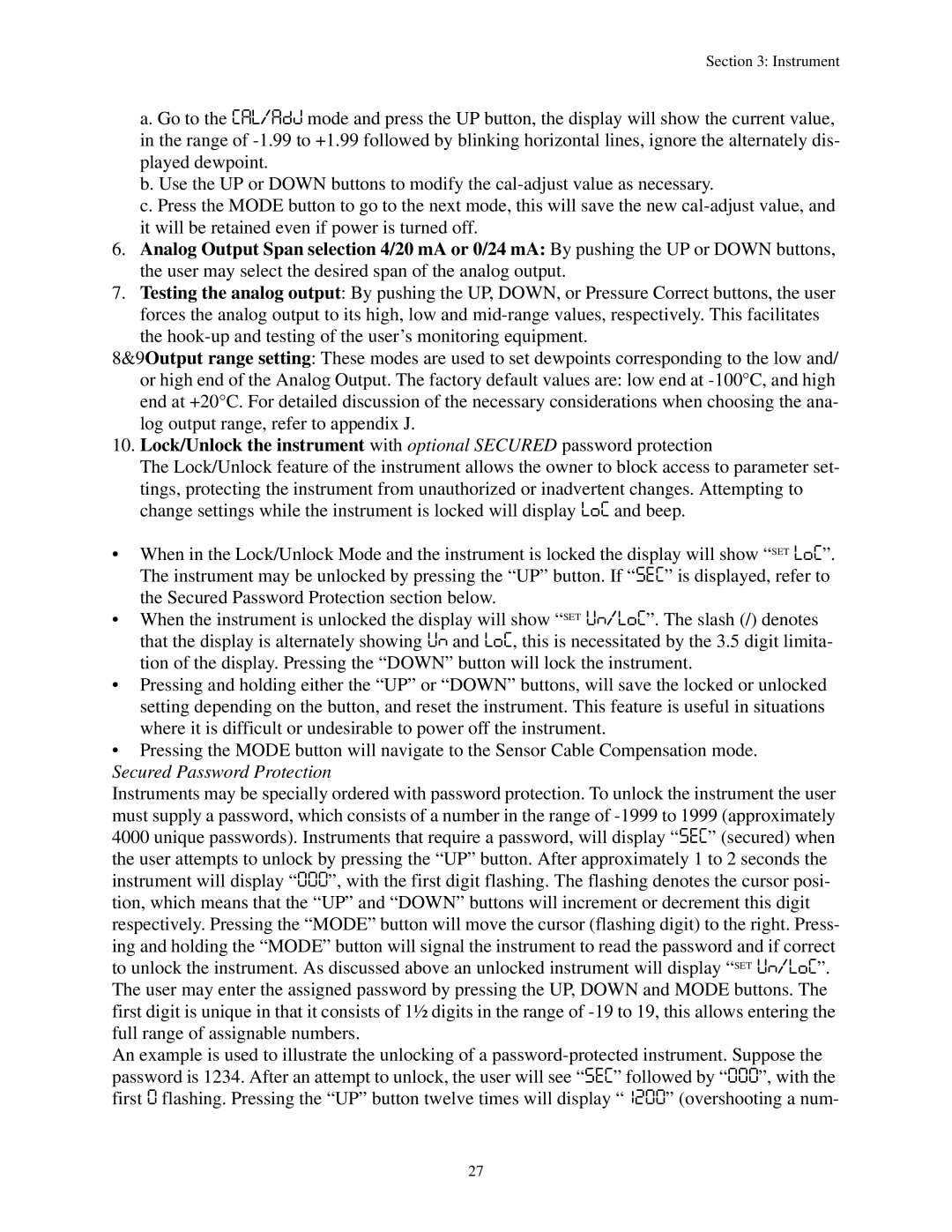Section 3: Instrument
a. Go to the CAL/ADJ mode and press the UP button, the display will show the current value, in the range of
b. Use the UP or DOWN buttons to modify the
c. Press the MODE button to go to the next mode, this will save the new
6.Analog Output Span selection 4/20 mA or 0/24 mA: By pushing the UP or DOWN buttons, the user may select the desired span of the analog output.
7.Testing the analog output: By pushing the UP, DOWN, or Pressure Correct buttons, the user forces the analog output to its high, low and
the
8&9Output range setting: These modes are used to set dewpoints corresponding to the low and/ or high end of the Analog Output. The factory default values are: low end at
10.Lock/Unlock the instrument with optional SECURED password protection
The Lock/Unlock feature of the instrument allows the owner to block access to parameter set- tings, protecting the instrument from unauthorized or inadvertent changes. Attempting to change settings while the instrument is locked will display LOC and beep.
•When in the Lock/Unlock Mode and the instrument is locked the display will show “SET LOC”. The instrument may be unlocked by pressing the “UP” button. If “SEC” is displayed, refer to the Secured Password Protection section below.
•When the instrument is unlocked the display will show “SET UN/LOC”. The slash (/) denotes that the display is alternately showing UN and LOC, this is necessitated by the 3.5 digit limita- tion of the display. Pressing the “DOWN” button will lock the instrument.
•Pressing and holding either the “UP” or “DOWN” buttons, will save the locked or unlocked setting depending on the button, and reset the instrument. This feature is useful in situations where it is difficult or undesirable to power off the instrument.
•Pressing the MODE button will navigate to the Sensor Cable Compensation mode.
Secured Password Protection
Instruments may be specially ordered with password protection. To unlock the instrument the user must supply a password, which consists of a number in the range of
An example is used to illustrate the unlocking of a
27
